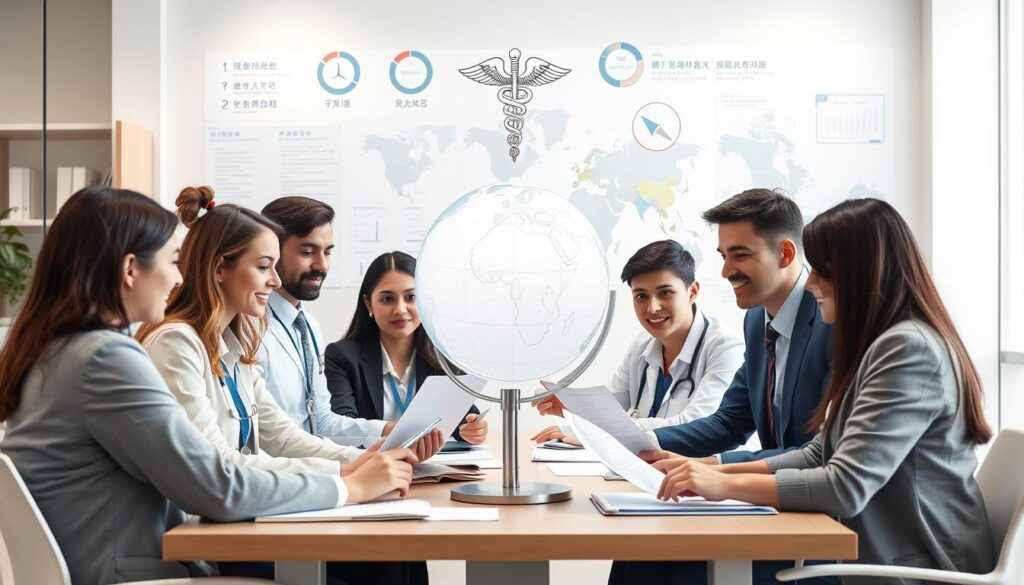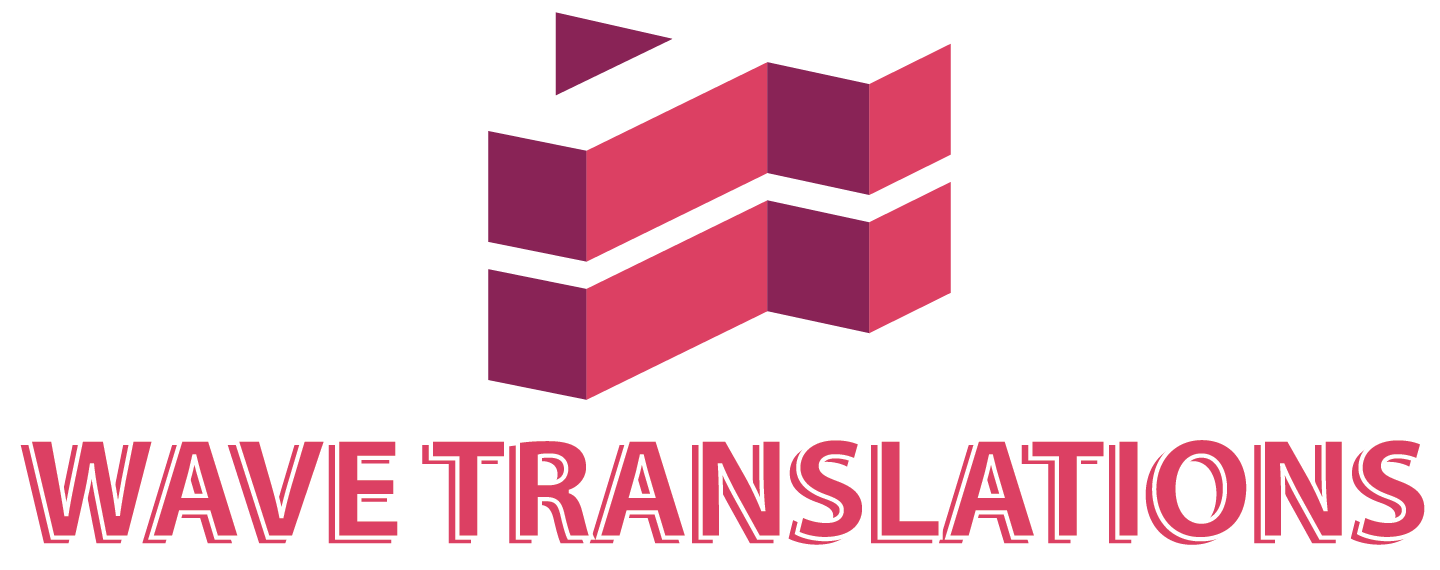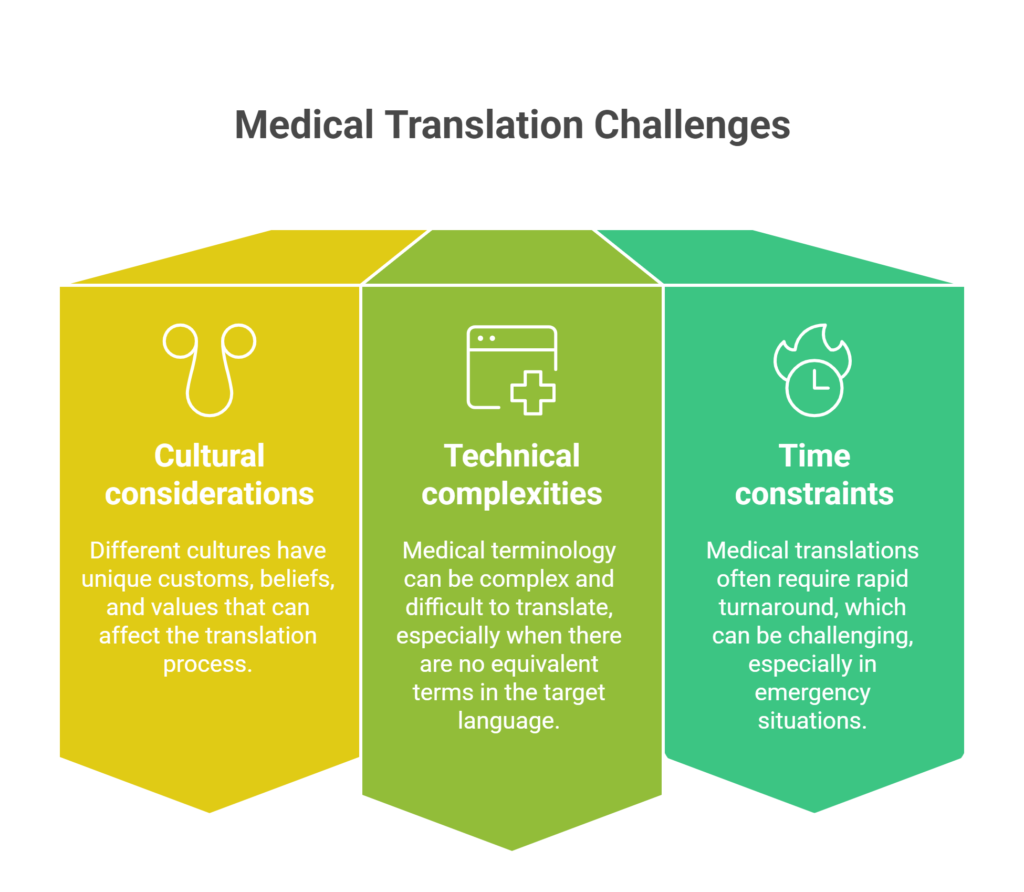Medical translation is key to patient care and safety. It ensures patient safety and clear communication. To do this well, we need expert linguists from professional medical translation services, special tools, and strict quality checks.
Accurate translations are essential for safety and following rules. Here, accurate communication can mean life or death.
Medical translation is key for international research and global health efforts. About 50% of medical mistakes come from language barriers. Using tools and glossaries can cut down errors by up to 40%.
The need for medical interpretation services is growing, showing the importance of clear healthcare communication.
Essential Components of Professional Medical Translation
Professional medical translation needs certified medical linguists with the right experience and skills. This ensures translations are correct and consistent. Mistakes can cause serious problems, like bad drug reactions and treatments that don’t work.
It’s also key to have medical terminology translation that’s precise. Medical terms often come from Latin and Greek, needing translators to know about 30,000 to 40,000 special terms. Plus, medical language translation needs a deep understanding of these terms and the skill to explain complex info simply. So, it’s important to work with skilled translators who can make high-quality translations that meet the standards.
The Role of Certified Medical Translators
Certified medical translators are key to making sure medical translations are right and consistent. They need special skills and knowledge in medical terms and healthcare rules. With more patients from different cultures, the need for clear medical translations has grown a lot.
What makes a good certified medical translator? Here are some important things:
- They must be good at a second language, with tests to prove it
- They need to know a lot about medical terms and healthcare rules
- They must keep learning to stay up to date
They also must know how to read and write well in their second language. The cost of interpreters varies — from $45 to $150 an hour for in-person services. Phone calls range from $1.25 to $3.00 a minute.
Certified medical translators ensure that healthcare providers can deliver high-quality care to every patient. This is especially critical in telehealth, when patients and doctors cannot meet in person.
Medical Translation Best Practices for Healthcare Providers
Healthcare providers must follow best practices for medical translation. This ensures patients get accurate and effective care. It includes preparing documents well, checking quality, and using version control. A medical translation company can help with these steps, like using professional translators and technology.
For medical report translation, working with a trusted medical translation services provider is key. They should know the healthcare industry well. This ensures translations are right and patients get the best care. Important things for healthcare providers include:
- Preparing documents clearly and concisely
- Checking quality to make sure translations are right and consistent
- Using version control to keep translations current and correct
By following these practices, healthcare providers can make sure translations are accurate and effective. This helps improve patient care, lowers errors, and boosts overall quality. Also, a professional medical translation company can help with the complex parts of medical translation. They ensure providers meet their patients’ needs.

Technology and Tools in Medical Translation
Medical translation software and tools are key for accurate medical translations. Specialized software, like computer-assisted translation (CAT) tools, helps manage medical terms well. This is critical in healthcare, where mistakes can be deadly.
Medical translation software has features like term management and translation memory. These help translators work better and ensure translations are right and consistent. For example, translation memories keep important terms for future use.
There are also many medical translation tools, like online platforms and apps. These tools enable doctors and patients to communicate even if they don’t share a common language.
Because of cost and availability, a study found, the use of professional interpreters is often limited. Medical translation services can help ensure high-quality output.
Maintaining Terminology Consistency Across Documents
Keeping terminology the same is key in medical translation. Small mistakes can cause big problems. To fix this, we need a term base, standard rules, and good reference materials. This means having one place for all approved terms and definitions, so everyone uses the same words.
A good glossary can cut down on mistakes by 30%. It’s very helpful when we’re in a hurry. Using the same terms and glossaries makes sure medical translations are top-notch. This is very important in medical translation.
Having a style guide and glossary is key for keeping terms the same. It helps avoid misunderstandings and makes documents easier to read. This is even more important in medical translation, where being right and consistent is everything. Using a Translation Memory (TM) system can cut translation time by 50% and mistakes by 20%.
In medical translation, we must think about how complex medical texts are. We need to make sure translations are precise. By working on term bases, standard rules, and managing references, we can make sure medical translations are accurate and consistent. This is very important in medical translation.
Quality Assurance in Medical Document Translation
It’s very important to make sure medical document translations are right for patient care and safety. Medical translation services must focus on quality to avoid mistakes. These mistakes could lead to wrong diagnoses or treatment plans. They should check translations well, use back-translation for accuracy, and follow quality control steps.
Some important things for quality assurance in medical document translation include:
- Using certified medical translators with expertise in specialized medical terminology
- Implementing a double-checking process involving a second translator
- Utilizing translation memory systems and glossaries to maintain consistency
- Conducting thorough research to ensure accuracy and clarity in translations
By focusing on quality, healthcare providers can make sure translations are accurate and safe. This is very important in healthcare, where language issues can be very serious. Working with trusted medical translation services and following quality steps helps avoid translation mistakes. This ensures the best care for patients.
Common Challenges in Medical Translation
Medical translation faces many challenges. These include cultural differences, technical complexities, and managing time. Cultural differences can change how we translate. Technical terms can be hard to explain in other languages. Time is also a big issue, like in emergencies when we need things fast.
Some big challenges in medical translation are:
- Cultural factors: Various cultures possess unique traditions, beliefs, and values that can influence the translation process.
- Technical challenges: As medical terms can be difficult to translate and may not necessarily have direct counterparts in other languages.
- Time constraints: Medical translations need to be done quickly, which is hard, even in urgent cases.
Research shows that medical translation faces big challenges. This is because there are not always the right words for scientific and health terms in other languages. Also, new diseases and treatments, like Zika and Ebola, make us need more translations by about 25% during health crises.
Good communication in medical translation can make patients feel less anxious by about 20%. This helps them get better. It’s key that patient documents, like consent forms and treatment plans, are easy to understand. Translations should use simple language most of the time, at least 85%.
| Challenge | Description |
|---|---|
| Cultural considerations | Different cultures have unique customs, beliefs, and values that can affect the translation process |
| Technical complexities | Medical terminology can be complex and difficult to translate, specially when there are no equivalent terms in the target language |
| Time constraints | Medical translations often require rapid turnaround, which can be challenging, specially in emergency situations |
Working with Medical Translation Services
Healthcare providers need to be careful when choosing medical translation services. These services are key for patient care and safety. In the U.S., about 8.3% of people speak English less than very well. This means over 25 million people need reliable translation services.
Look for a company that is professional, offers high-quality translations, and uses the latest technology. When picking a service, consider their experience, translation quality, and technology.
- Experience in providing medical translation services
- Quality of translations, including accuracy and consistency
- Technology used to facilitate efficient and secure translations
Working well with medical translation services helps healthcare providers. They can make sure translations are right and clear. This way, they can focus more on caring for patients.
In short, picking the right medical translation service like Wave Translations is important. By choosing a good company and following best practices, healthcare providers can improve patient care and safety.
Regulatory Compliance and Documentation
Medical translation rules are key for accurate and consistent translations. In the U.S., the FDA says all medical device and drug documents must be translated right for safety. This shows how vital medical translation rules are in healthcare.
The FDA suggests using certified medical translators. They should know medical terms and rules.
Regulatory rules are not just for the U.S.; they matter worldwide. In the European Union, documents must be in each country’s official language where products are sold. The European Medicines Agency also needs certified translators and reviewers for rules.
Medical language translation is key for accurate and consistent translations. It helps follow rules.
To follow rules in medical translation, you must follow laws like HIPAA. Use certified translators who know medical and regulatory terms. Also, use quality checks like back-translation and peer review for accuracy.
This way, healthcare providers can avoid legal problems. They make sure translations are safe and work well.
Future Trends in Medical Translation
The future of medical translation will be shaped by new tech like AI and machine learning. These tools can make translations more accurate and faster. They can also cut costs and time, helping healthcare to keep up with quality translations.
AI and machine learning will be key in medical translation tech. Real-time interpreting devices in medical settings can also save lives by improving communication in emergencies. There will be more need for translators who know medical terms and tech well.
Good medical translations can help reduce health gaps and improve patient care for all. They can also help global research, speeding up new treatments and tech. As demand grows, keeping up with new trends and tech is vital for top patient care.
Ensuring Excellence in Medical Translation Services
Medical translation is key in healthcare, needing accuracy and excellence. Certified translators by Wave Translations help by translating important documents like patient records. They make sure translations are top-notch, keeping patients safe and care better.
Professional services are vital for good healthcare talk, even in emergencies. This is because quick and right translations can save lives.
The need for medical translation is growing, due to telemedicine and global health efforts. Working with certified translators helps break language barriers. It also makes sure everyone gets the care they need.
Good translation means less waiting and fewer complaints about misunderstandings.
Frequently Asked Questions
What is the importance of medical translation in the healthcare industry?
Medical translation is key for patient care and safety. Wrong or incomplete translations can be very dangerous. Healthcare must follow strict legal and regulatory rules to avoid legal problems. Medical translation is vital for accurate and effective care. It ensures patients get the right treatment.
What are the essential components of professional medical translation?
Professional medical translation needs certified medical linguists. It also requires precise medical term translation. Translations must be accurate and consistent. Medical translators need to know a lot about medical terms. They must be able to explain complex information clearly.
What qualifications do certified medical translators need?
Certified medical translators are very important. They need specific qualifications and certifications, and must know a lot about medical terms, drugs, and healthcare rules. This helps them stay up-to-date with new medical translation information.
What are the best practices for healthcare providers in medical translation?
Healthcare providers must follow best practices for medical translation. This includes preparing documents well and checking quality. They should also use systems to keep translations current. By doing this, healthcare providers can make sure translations are accurate and effective.
How can technology support medical translation?
Technology is very important for medical translation. There are special software and tools to help. These tools can make translations better, faster, and cheaper. Healthcare providers can use these technologies to make sure translations are top quality.
Why is terminology consistency important in medical translation?
Keeping medical terms the same in all documents is very important. Small mistakes can be very serious. To avoid this, healthcare providers need to use standard terms and glossaries. This ensures that translations are accurate and consistent.
What are the key quality assurance measures in medical document translation?
Quality is very important in medical document translation. This means checking translations carefully and using back-translation. It also means having quality control measures in place. By focusing on quality, healthcare providers can make sure translations are safe and effective.
What are the common challenges in medical translation?
Medical translation has several challenges. These include cultural differences, technical complexities, and managing time. Cultural differences can affect the translation, and technical issues can make it hard to explain complex information. Time can also be a problem, like in emergencies. Understanding these challenges helps healthcare providers find ways to overcome them.
How can healthcare providers work effectively with medical translation services?
Healthcare providers need to choose and work with medical translation services carefully. They should look at the service’s professionalism, quality, and technology. This ensures they meet high standards. By working well with these services, healthcare providers can make sure translations are accurate and effective.
What are the regulatory compliance requirements for medical translation?
Medical translation must follow strict rules and laws, like HIPAA. This means translations must be accurate and follow all regulations. By focusing on compliance, healthcare providers can avoid legal problems. This ensures medical translations are safe and effective for patients.
How will emerging technologies impact the future of medical translation?
New technologies like AI and machine learning will change medical translation. They can make translations more accurate, efficient, and consistent. They can also save money and time. By using these technologies, healthcare providers can keep up with the latest in medical translation.


